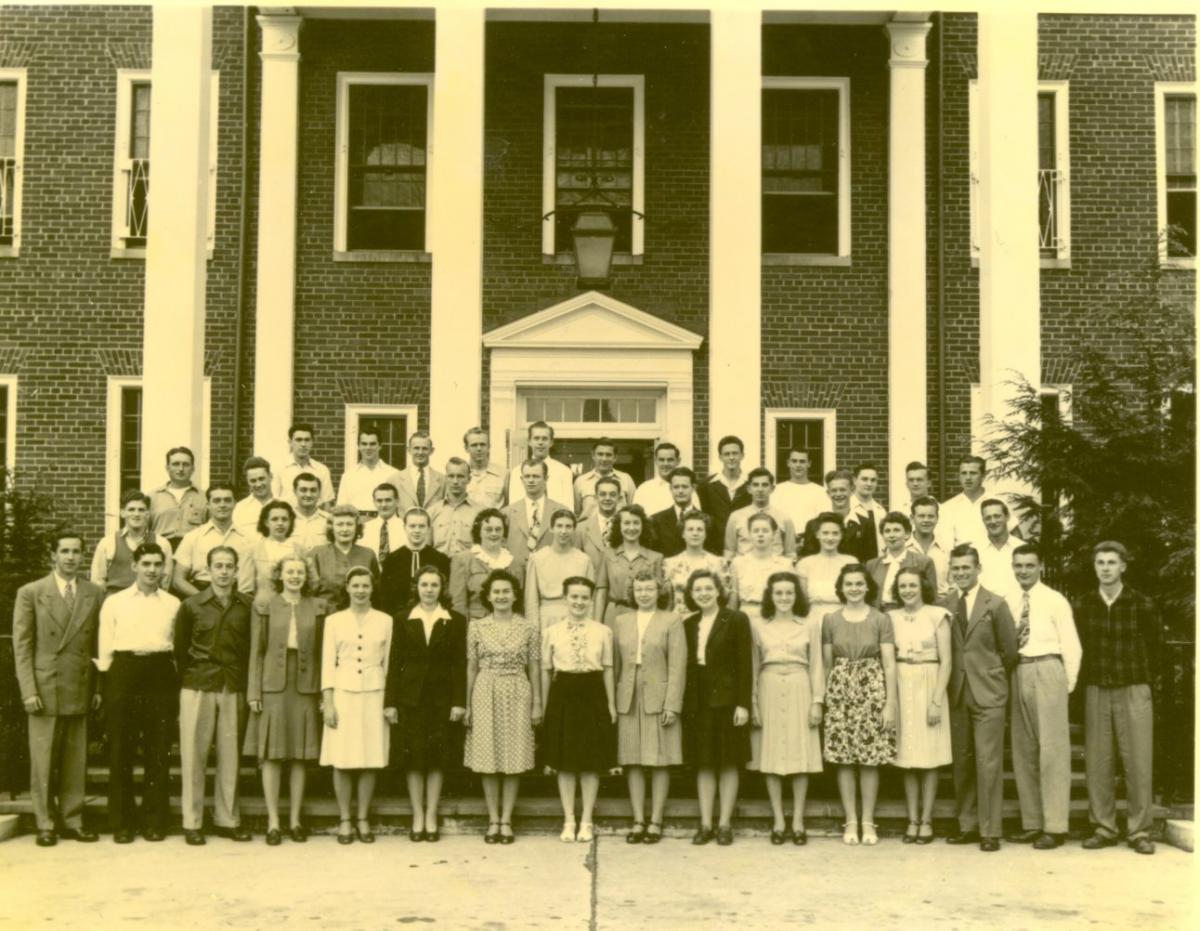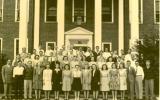CPS Unit Number 066-01
Camp: 66
Unit ID: 1
Title: Norristown Hospital
Operating agency: MCC
Opened: 12 1942
Closed: 10 1946
Workers
Total number of workers who worked in this camp: 219
-
 CPS Camp No. 66, Norristown, PennsylvaniaCivilian Public Service, camp 66, Norristown, Pennsylvania. Unit operated December 1942 - October, 1946.Photo 291a Box 2, Folder 5. MCC Photographs, Civilian Public Service, 1941-1947. IX-13-2.2. Mennonite Central Committee Photo Archive
CPS Camp No. 66, Norristown, PennsylvaniaCivilian Public Service, camp 66, Norristown, Pennsylvania. Unit operated December 1942 - October, 1946.Photo 291a Box 2, Folder 5. MCC Photographs, Civilian Public Service, 1941-1947. IX-13-2.2. Mennonite Central Committee Photo Archive
CPS Unit No. 66, a Mental Hospital unit located at Norristown State Hospital in Norristown, Pennsylvania operated by Mennonite Central Committee opened in December 1942 and closed in October 1946. The men worked as hospital attendants and filled other roles in the hospital as needed.
Norristown State Hospital at Norristown, Pennsylvania, not far from Philadelphia, housed a Mennonite Central Committee (MCC) mental health CPS unit. Loss of personnel due to war was perhaps the highest at Norristown of all the Pennsylvania state mental hospitals.
Director: Kenneth Weaver, Ira Smucker, Henry Reimer, William Ramseyer, Ervin Wiens
As was generally true in MCC camps and units, most of the men reported Mennonite and Amish denominational affiliation when entering CPS.
Come CPS men at Norristown were married and were accompanied by their wives. Some wives were employed by the hospital as ward attendants, performing similar duties as the men, but unlike the men, were paid for their work. They were joined at Norristown by women participating in summer service at the hospital.
Over one hundred and sixty men served in the unit, averaging one hundred at one time. The plan was for them to serve as attendants, but because of short staffing, they served in nearly all of the activities at the hospital. Even then the men dealt with short staffing coupled with appalling tasks.
Superintendent Arthur Noyes commended the men for recognizing serious shortcomings at the hospital and providing service “to the best of their ability”.
The male unit housed two thousand and one hundred patients. In addition to the CPS men, one hundred regular attendants covered the male wards. (Warren Sawyer diary in Sareyan p. 45)
Cleland Gunden, recruited to Norristown from Medaryville, reflected on his experience there.
The hospital was a large institution with a population of 5,000 patients. As an attendant on an epileptic ward I found this experience was a challenge and an unforgettable learning experience.
After three months, in February 1943, I was transferred to the hospital storeroom where all hospital supplies were received and delivered to the various departments. A short time later the head storekeeper was drafted into the military and before he left he graciously taught me the duties of managing the storeroom and doing the bookkeeping. Another CPS man came in to help and we tended the storeroom until the former storekeeper returned from military service.
My release came in December 1945 but I stayed on at the hospital and worked for another three months. We learned to work with many different people. We observed abuse first hand in the hospital and experienced how minority persons felt. Mennonite, Brethren and Quakers all worked together. None of us was worried about so-called “integration.”
We were all in this together. These experiences have remained in my storehouse of memories and the friendships have continued to be part of my life. (“Detour . . . Main Highway”: Our CPS Stories p. 21)
Between 1944 and 1946, women’s summer service units began to open at mental hospitals organized by the denominational operating agency. MCC established such a unit at Norristown State Hospital to help address staff shortages, as well as to respond to women’s interests in humanitarian service.
Phil Frey served as resident camp pastor at Norristown beginning in October 1943, but was soon reassigned to serve nine hospital units operating in the eastern states.
The men published a forty-eight-page yearbook called Files, and it contained a history and background of the unit.
For more information on this unit and other mental health and training school units, see Melvin Gingerich, Service for Peace: A History of Mennonite Civilian Public Service. Akron, PA: Mennonite Central Committee printed by Herald Press, Scottdale, PA, 1949, Chapter XVI, pp. 213-251.
For more information on women COs see Rachel Waltner Goossen, Women Against the Good War: Conscientious Objection and Gender on the American Home Front, 1941-47. Chapel Hill, NC: The University of North Carolina Press, 1997.
For personal stories of CPS men, see Peace Committee and Seniors for Peace Coordinating Committee of the College Mennonite Church of Goshen, Indiana, “Detour . . . Main Highway”: Our CPS Stories. Nappanee, IN: Evangel Press, 1995, 2000.
See also Alex Sareyan, The Turning Point: How Persons of Conscience Brought About Major Change in the Care of America’s Mentally Ill. Scottdale, PA: Herald Press, 1994.
Swarthmore College Peace Collection, Camp publications database.
For more in depth treatment of the mental health units, see Steven J. Taylor, Acts of Conscience: World War II, Mental Institutions, and Religious Objectors. Syracuse, NY: Syracuse University Press, 2009.
